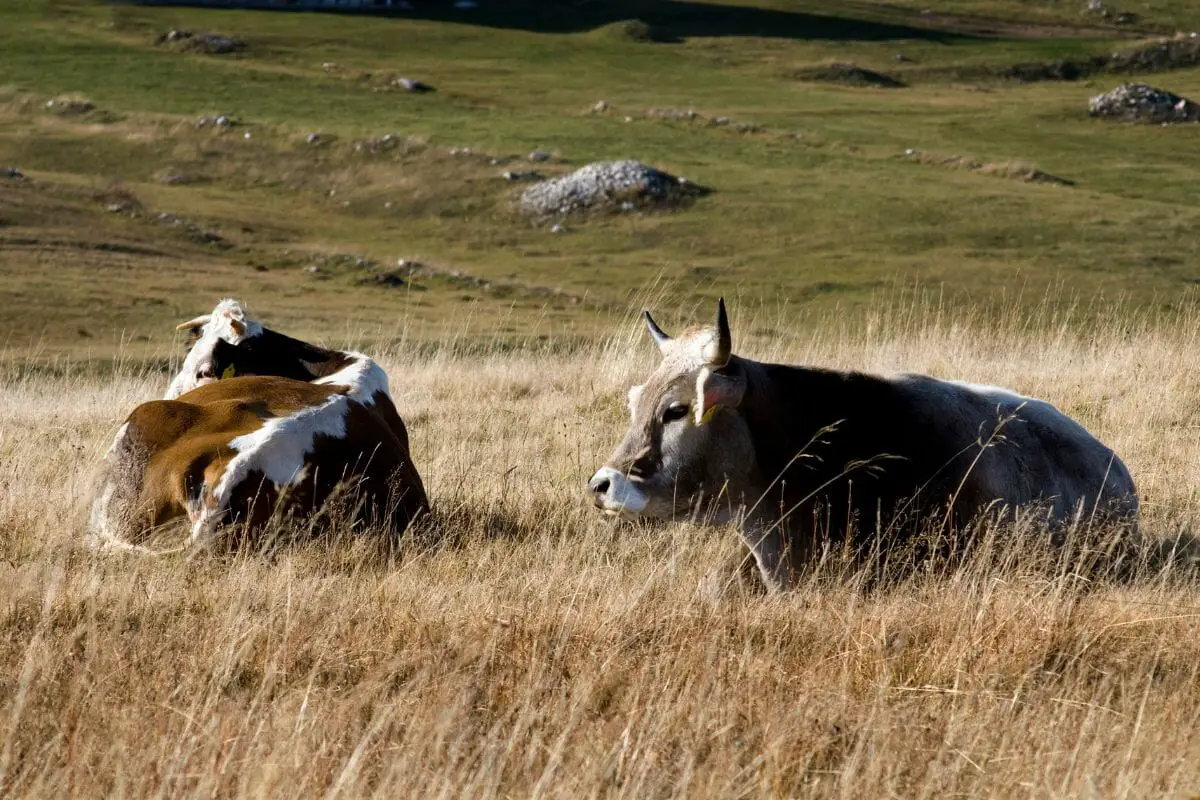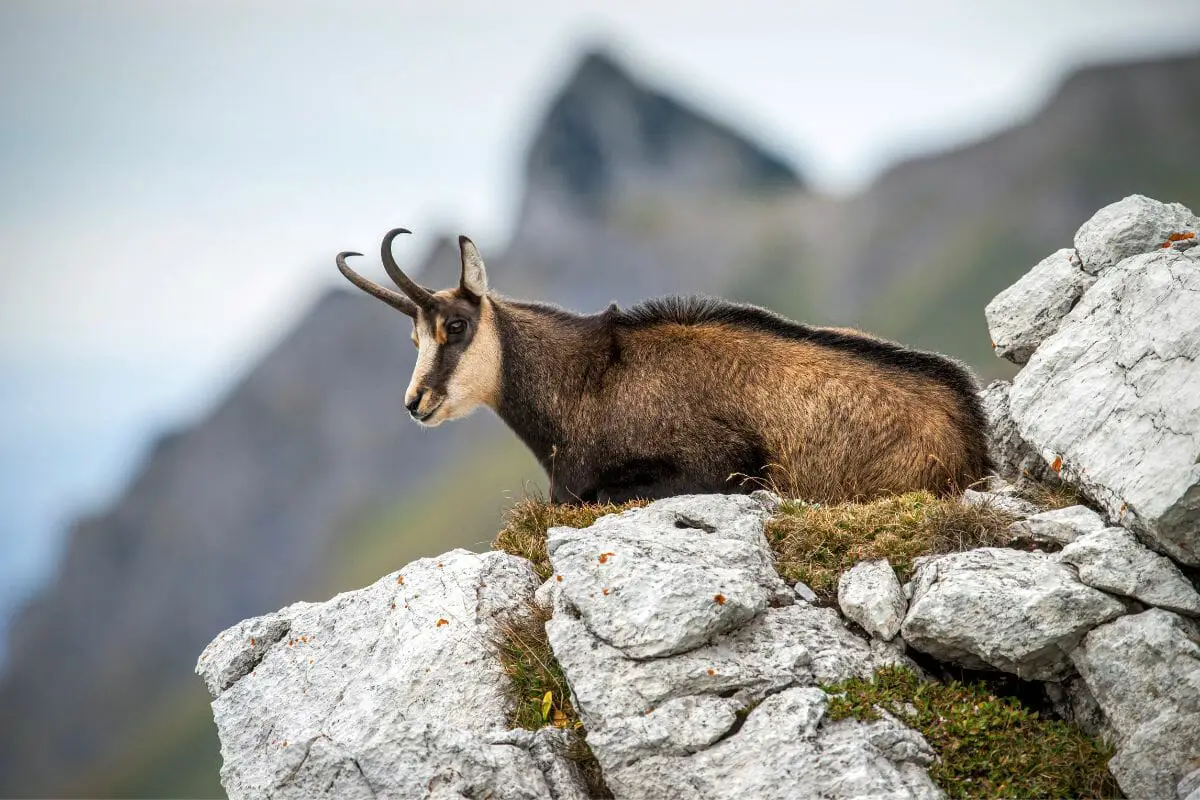Whenever we witness cow’s in their natural habitat, it seems as though they’re constantly chewing on something. Some people might mistakenly think that this is grass, because after all, they always seem to be grazing.

But, these cows are actually chewing on something altogether different, which is known as cud.
Did you know that cows will actually spend around 8 hours of their day chewing this substance? This is because in order to digest their food properly, they need to chew for far longer than human beings.
To find out more about what cud really is, as well as a list of some of the different animals known for chewing this substance, keep reading, as we take a closer look below.
What Exactly Is Cud?
Now, before we jump straight in and start listing some of the animals that are known for chewing cud, let’s take a closer look at what exactly cud is. Some people might not be aware of the fact that cud is actually digested food.
It’s made from whatever grassland or foliage the animal has been grazing on, and is regurgitated by the stomach for more chewing.
When cows, for example, take their first bite of grass, they won’t even chew it thoroughly at all.
Instead, they’ll simply make the grass wet enough to pass through their system. After they’ve done this, it will be mixed in with the acid in the cow’s stomach, until it becomes even softer.
After this process happens, the stomach will essentially regurgitate the food back up to the cow’s mouth. The cow will then chow down again, and perform more chewing actions.
After this is done (you guessed it ), it will be swallowed and reabsorbed into the stomach again, and then passed to a different section of the stomach, where it is finally absorbed.
Now we can see why cows appear to be constantly eating, they’re not greedy, their digestive process is just incredibly arduous.
If you see cows that are happily chewing their cud, this means that they’re healthy. Good chewing is associated with the overall health and wellbeing of the animal, and will mean that they’ll produce more milk as a result.
Animals that chew cud are known as herbivores, and there are actually plenty found in the animal kingdom that undergo this unique digestive process.
If you want to find out about some animals that chew cud, you’ve come to the right place.
Below, we’ve compiled a list of several animals that are well known for their cud chewing behaviors. Keep reading to find out more.
1. Cows
Well, we couldn’t start off our list without mentioning cows, the most well known animal that eats cud. Cows have not always been domesticated, but have been for the past couple of thousand years.
They’re known for being valuable for the milk they produce, as well as supplying humans with meat. In some countries, cow’s are actually thought to be sacred creatures, and are widely worshiped.
When cows are first born, their stomachs will not be adept at chewing cud. As we mentioned briefly above, there are two key areas of a cow’s digestive system.
The grass they eat will be passed through these various sections of the stomach throughout the whole process.
Calves won’t develop these intricacies until they’re around 7 months old, after this time, they’ll be able to chew cud.
Some cows are slaughtered for meat before they’re able to chew cud. These include young male cows, which are known for producing veal meat.
2. Giraffes
An animal that some people might be surprised to find eat’s cud, is the giraffe.
That’s right, these tall creatures have digestive systems that are adept at producing this substance. Typically found in the savannah, they tend to feed on tall trees.
If they struggle to reach their food, they will stick out their incredibly long tongues, and actually wrap it around their food in order to grasp it.
Giraffes actually spend more time grazing than cows do, and will do so for up to 20 hours in a single day! This means that they only get around half an hour of sleep in total.
In addition to this, you’ve probably already guessed that the amount of food they eat is colossal in comparison to many other cud chewing animals.
One of the most interesting things about giraffes is that you can actually witness the digestive process happening.
Because they have such long necks, you can actually see the cud being swallowed, and regurgitated by the stomach if observed closely enough.
3. Deer
Another animal that is known for having a lengthy digestive system, is the deer.
That’s right, these cute creatures can actually consume around 17 pounds of food each day. Their diet is actually quite varied, and they like to graze on a whole host of different food items.
Some of their most favorite foods include berries, leaves, grass, and even mushrooms.
When it comes to how long the digestive process takes, it can be anywhere up to 16 hours. This means that just like the giraffe, the deer doesn’t have very much time to rest.
4. Chamois

Many people reading this article won’t be aware of what a chamois is. When you first see it, it actually resembles a traditional goat in many ways. It likes to live in areas that have lots of mountains that it’s able to climb.
When it comes to color, they’re normally black, a color associated with the devil in regards to this species. It is actually sometimes used for producing leather for clothing, purely because it has such a soft texture.
They enjoy living in herds, so chances are that if you see one of these creatures, it won’t be long until you witness a few more.
5. Camels
Many of us are familiar with camels, but did you know that they were also guilty of chewing cud. That’s right, these animals love to graze.
They are well known for having large humps on their back, depending on the species, sometimes more than one.
In these humps, they carry water that they store there in order to survive long periods of time in the desert.
In fact, they can actually survive for months without any water at all, which is incredible.
Their digestive systems are incredibly complex, and are made up of four different parts in order to allow them to produce cud.
It’s important that camels have sufficient food to eat and digest, as this strongly affects their survival rate in relation to water intake.
The more food a camel has to eat, the less likely it is to consume its precious water, and subsequently, survive longer.
6. Moose
Many of us will be familiar with the moose, a large creature that is easily recognizable by its large antlers, in addition to its large nose.
They are actually a species of deer, the largest of them all in fact, and enjoy grazing.
The male’s antlers are known for growing each year from the time they are born, until they become adults. Each year, the antlers are shed, growing new ones in their place.
In terms of diet, the moose’s favorite food to graze on is fruit, but they also enjoy a whole host of different foliage.
One of the most interesting things about the moose’s diet is that it’s typically composed of plants found underwater.
So, if you’ve ever seen a moose poking its head through the water, it’s probably not actually drinking, but rather, searching for its food.
Their large nostrils, which are a defining feature of this animal, and are able to close shut so that they can access these foods easily.
7. Bison
Another animal that is known for having a complex digestive system producing cud, is the bison. Bison are particularly striking animals, purely due to their large size and shaggy coats, which tend to be brown in color.
They are so large in fact, that they’re actually regarded as the largest creature in the whole of North America.
When it comes to matters of diet, bison enjoy eating weeds, leafy plants, and plain old grass. They will actually forage their food for around 11 hours a day, which is a couple of hours more than cows.
Final Thoughts
To sum up, cud is a substance produced in the digestive system of many animals.
Many animals will have complex digestive systems, which means that their food needs to be redigested and regurgitated several times before it can be absorbed by the body.
This process isn’t just limited to cows, but a whole host of other animals.
- What Should I Do If A Koala Bites Me? Safety Guide - 2024-05-30
- Are Kangaroos Born Without Hind Legs? A Fascinating Journey - 2024-05-30
- Animals That Look Like Squirrels - 2024-05-30









